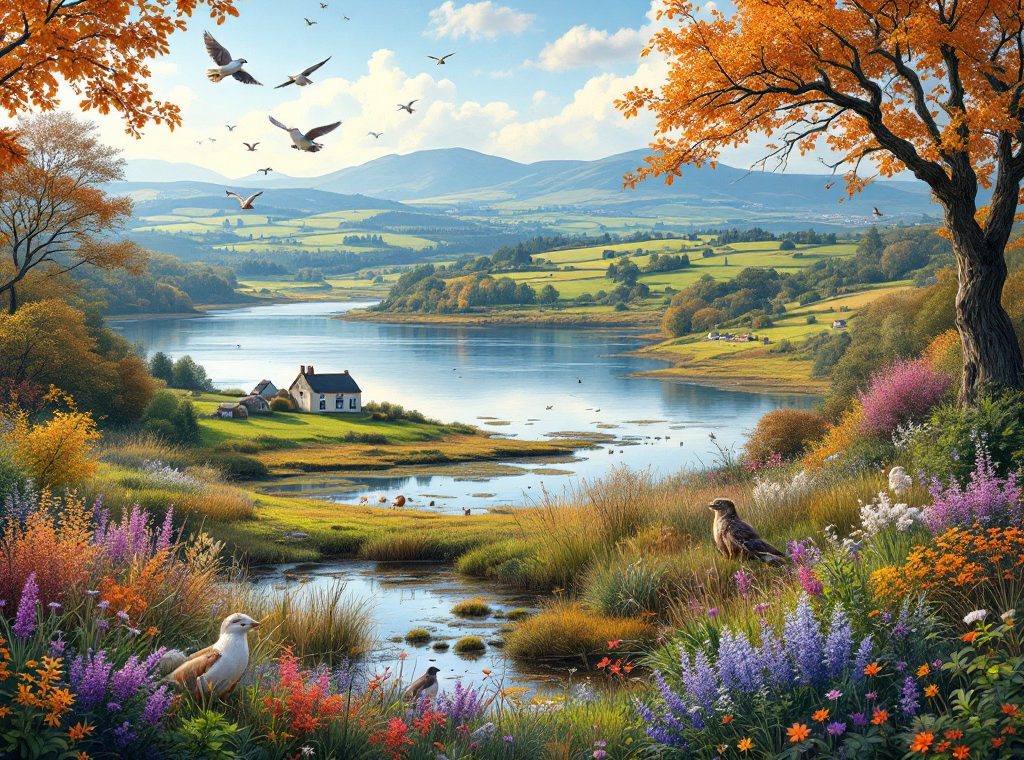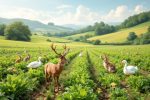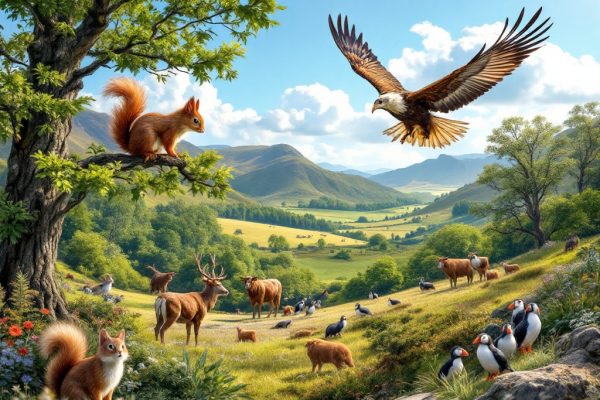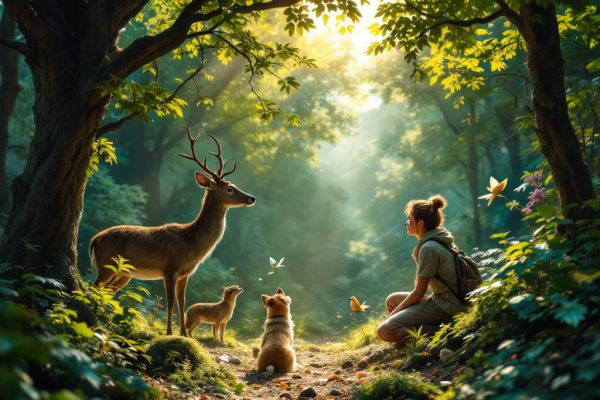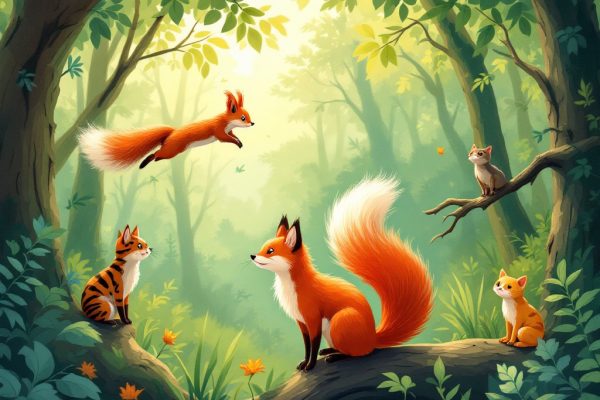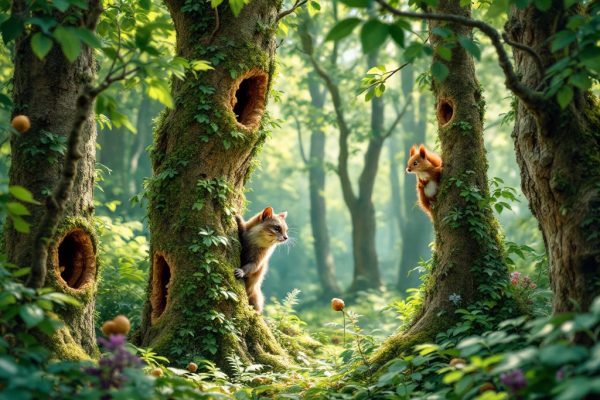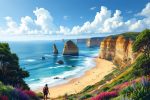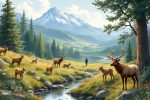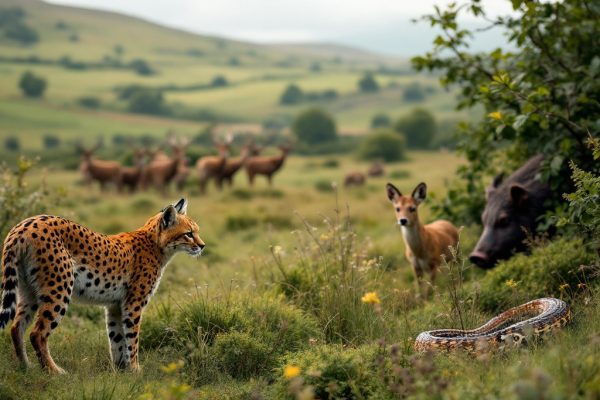Where Do Wild Animals Live in Lothian?
Discover Lothian’s incredible wildlife! Explore Aberlady Bird Reserve, a crucial stop for migrating birds, and John Muir Country Park, a coastal sanctuary. See otters at Duddingstone Loch and rare birds at Addiewell Bing. Explore unique ecosystems like Longridge Moss, home to sphagnum moss. From coastal havens to urban escapes like Corstorphine Hill, Lothian offers diverse habitats teeming with life. Begin your wildlife adventure today!
Important information
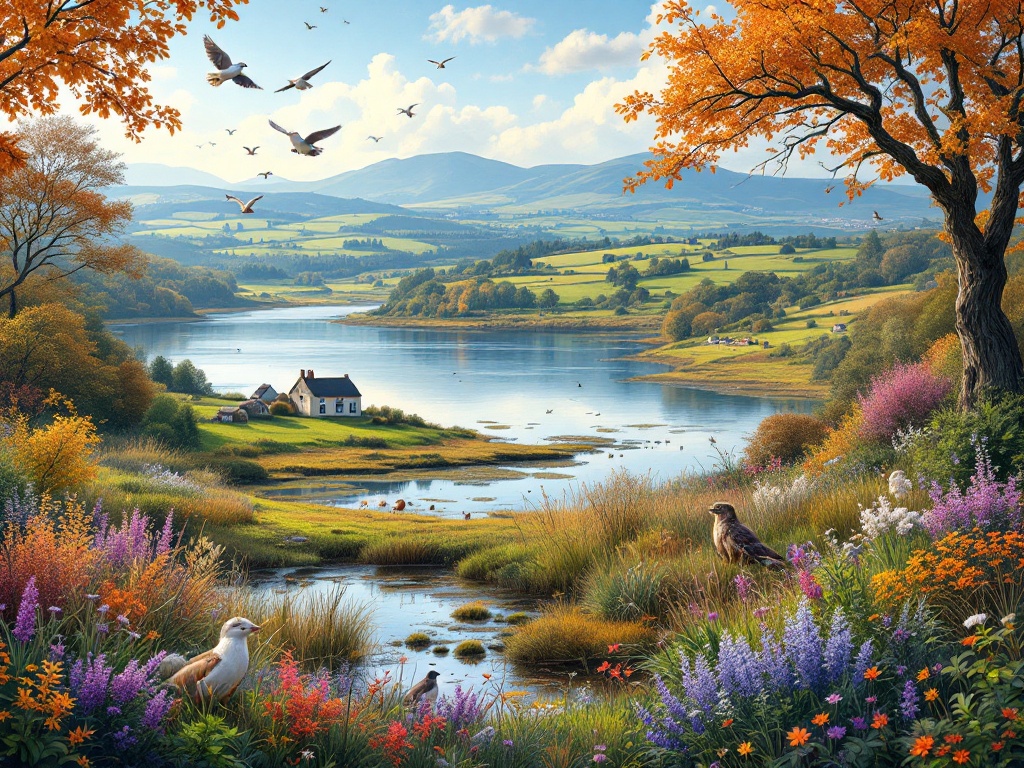
- East Lothian offers diverse wildlife viewing opportunities, including birdwatching and otter spotting.
- Aberlady Bay is Britain’s first Local Nature Reserve and a crucial stop for migrating birds.
- The Firth of Forth and Inchcolm Island are home to various marine life, including seals, dolphins, and even whales.
- Arthur’s Seat and Hunter’s Bog in Edinburgh provide urban wildlife experiences, with opportunities to see foxes, badgers, and various bird species.
- Longridge Moss is a unique lowland raised bog habitat supporting diverse plant life, especially Sphagnum moss.
Key Wildlife Locations in Lothian
East Lothian offers a rich tapestry of wildlife. Explore havens like Aberlady Bird Reserve, John Muir Country Park, and Duddingstone Loch, showcasing diverse habitats teeming with various species year-round. Addiewell Bing, Corstorphine Hill, and Longridge Moss further enhance the region’s biodiversity. These locations offer excellent birdwatching and even the chance to spot an otter. Discover Scotland’s natural beauty through the diverse plant and animal life in East Lothian.
Aberlady Bird Reserve: A Haven for Birds
Aberlady Bay, located on the Firth of Forth, is known for being Britain’s first Local Nature Reserve. This essential habitat supports many bird species, especially during their migrations, providing a crucial resting and refueling point.
John Muir Country Park: Coastal Wildlife Sanctuary
John Muir Country Park protects East Lothian’s coast. The park supports diverse ecosystems, making it a haven for wildlife, especially coastal birds.
Duddingstone Loch: Thriving with Wildfowl and Otters
Duddingstone Loch, a freshwater haven teeming with life, lies south of Edinburgh. Ducks, geese, and swans abound, sharing the waters with otters, further enriching the loch’s biodiversity. Its peaceful, easily accessible location makes it a favorite for birdwatchers and nature lovers seeking tranquility.
Corstorphine Hill: Nature Reserve with Diverse Species
Corstorphine Hill Local Nature Reserve offers diverse habitats, including woodland, grassland, and vital wetlands. This urban escape supports various wildlife, such as roe deer and the occasional great spotted woodpecker.
Addiewell Bing: Valuable Habitat for Wildlife
Addiewell Bing, a valuable natural area in Lothian, supports a rich ecosystem. Its diverse mix of woodland, scrub, and grassland habitats provides a haven for a variety of wildlife species.
Longridge Moss: Rich Lowland Raised Bog
South of Whitburn, Longridge Moss is a lowland raised bog, a unique habitat supporting diverse plant life. These plants, crucial for biodiversity, thrive in the acidic conditions. Sphagnum moss dominates the landscape, creating a carpet-like effect, while other acid-loving plants contribute to this rich ecosystem. Protecting this delicate balance is essential.
Exploring Edinburgh’s Wildlife Hotspots
Discover Edinburgh’s natural wonders. Explore the diverse urban wildlife at Arthur’s Seat and Hunter’s Bog. Birdwatchers can enjoy coastal species at Musselburgh and Aberlady Bay. The Firth of Forth and Inchcolm Island offer a glimpse into Scotland’s marine life. See seals at Cramond.
Arthur’s Seat and Hunter’s Bog: Urban Wildlife Experience
Edinburgh’s Arthur’s Seat and Hunter’s Bog offer a surprising diversity of habitats, supporting a rich tapestry of wildlife. These habitats range from grasslands and woodlands to wetlands. Visitors might glimpse foxes, badgers, or a variety of bird species. Their proximity to the city makes them ideal for wildlife observation, research, and educational opportunities, providing valuable insights into urban ecosystems. Respectful visitation ensures these natural spaces remain protected for generations to come.
Musselburgh and Aberlady Bay: Coastal Birdwatching
Musselburgh and Aberlady Bay are fantastic locations for observing coastal birds, attracting diverse species, particularly during migration. These bays provide a crucial resting spot for birds on long journeys, making them excellent for birdwatching.
Firth of Forth and Inchcolm Island: Marine Life Exploration
The Firth of Forth and Inchcolm Island are a vibrant hub for marine life. Harbor and grey seals are commonly sighted. Even minke whales and bottlenose dolphins occasionally grace these waters. The island itself is a rich habitat teeming with fish and crustaceans, providing a haven for seabirds, including the charming puffin. This area truly boasts a remarkable diversity of species.
Cramond: Seals and Coastal Fauna
Cramond Island, nestled in the Firth of Forth, is a haven for harbor seals. Its intertidal zones teem with a rich variety of coastal life.

